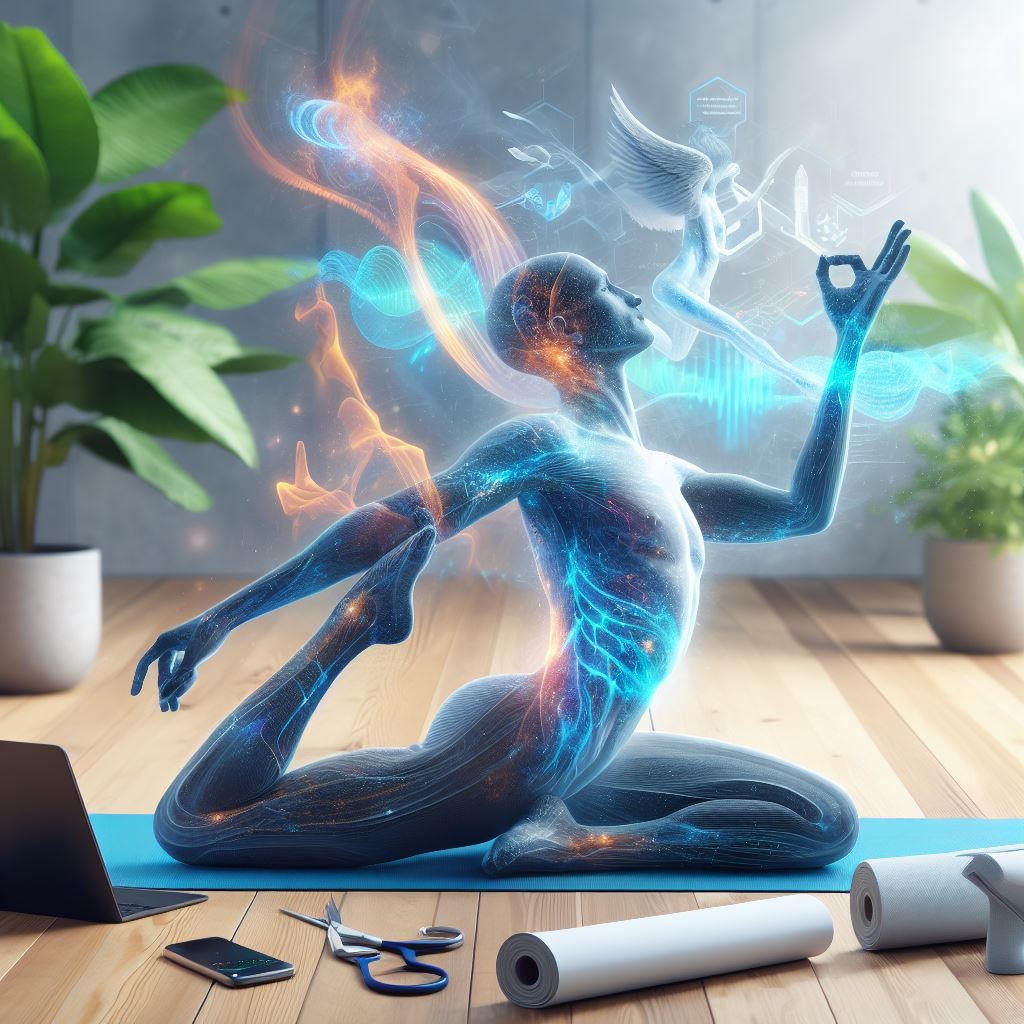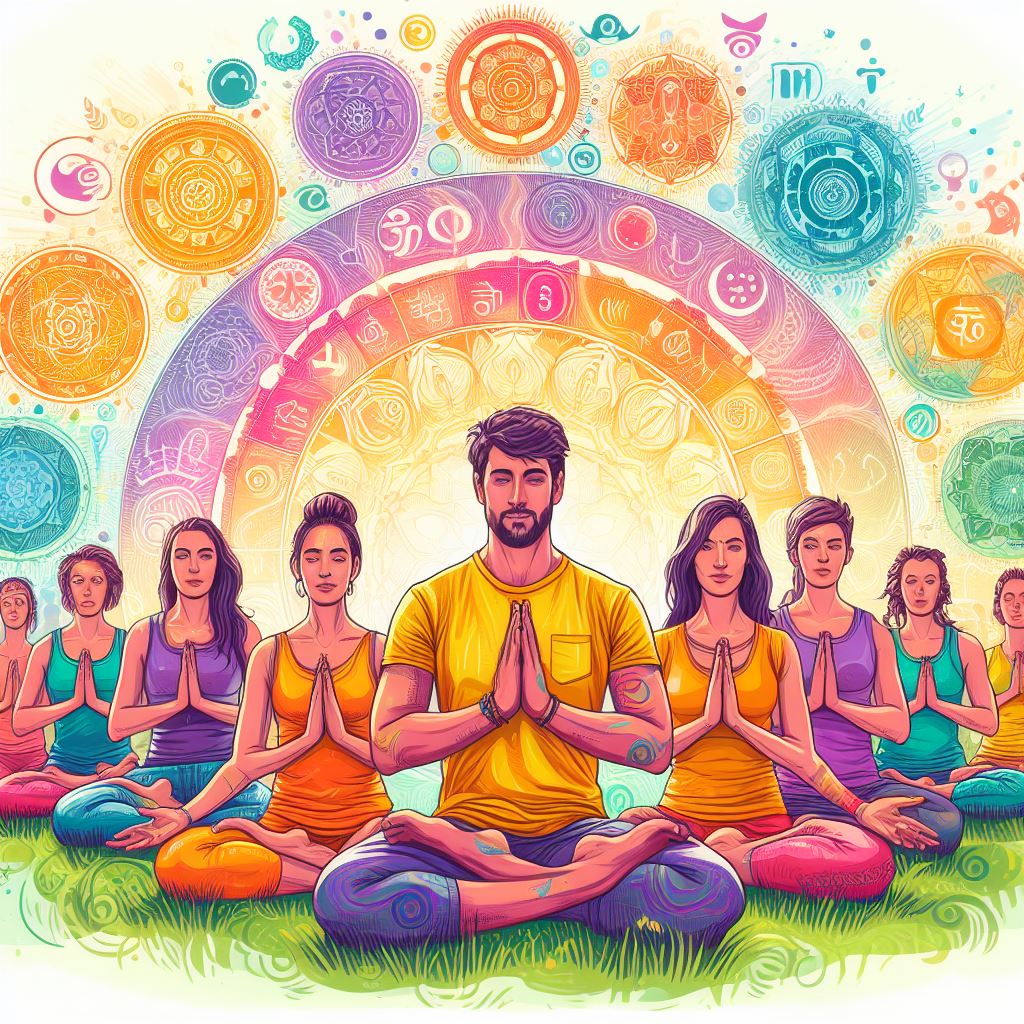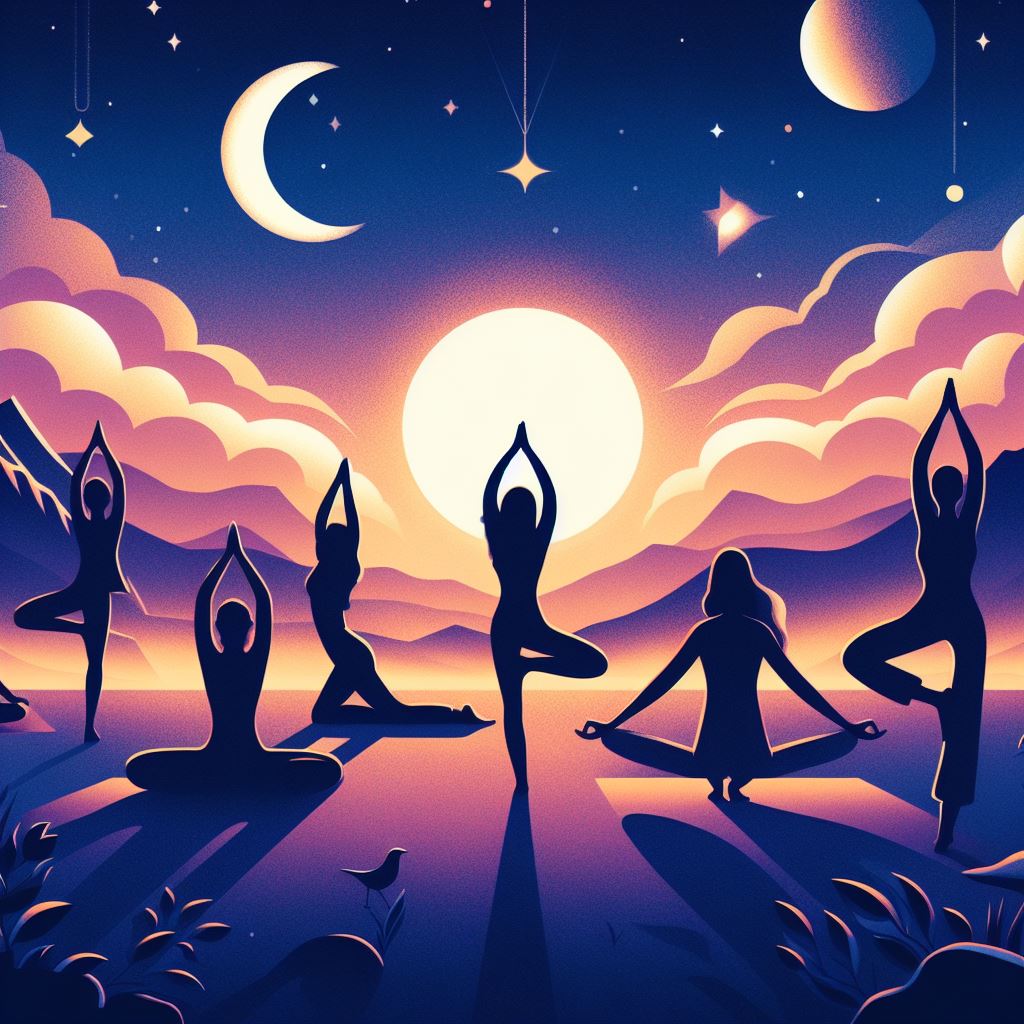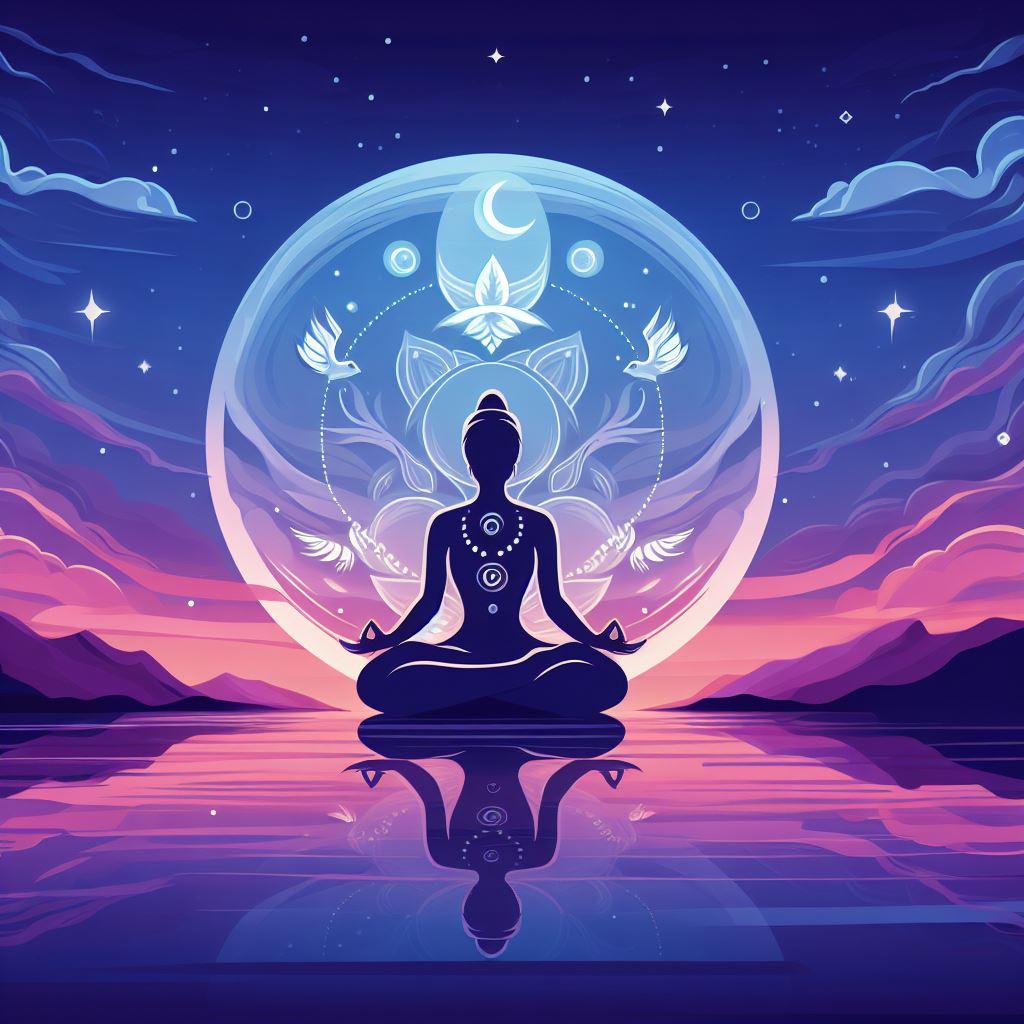
Yoga, a practice intertwined with wellness and mindfulness, offers a plethora of benefits. However, like any physical activity, it demands awareness and care to prevent injuries. This article delves into the key practices for fostering a safe and nurturing yoga journey.
Understanding Your Body’s Signals
Mastering the art of listening to your body is a fundamental aspect of a safe and fulfilling yoga practice. Your body speaks its own language, a subtle yet profound communication that guides you toward a harmonious balance between effort and ease. Developing an attuned awareness of these signals is not just about enhancing your practice; it’s about nurturing a deep, respectful relationship with your body.
In the realm of yoga, every stretch, and every pose brings with it a spectrum of sensations. Learning to distinguish between a stretch that is healthfully challenging and one that borders on pain is crucial. It’s an intricate dance of pushing your limits while also honoring your boundaries. This awareness is akin to a gentle conversation with your body, where you learn to understand its whispers before they turn into screams of distress.
Attentive listening to your body involves more than just heeding physical sensations; it’s also about being mindful of your emotional and mental states. Sometimes, discomfort in a pose isn’t just physical; it can be a reflection of emotional blockages or mental resistance. By being attuned to these aspects, you create a yoga practice that is not only physically aligned but also emotionally and mentally therapeutic.
Responding with respect to your body’s needs and limitations is an act of self-compassion. It’s recognizing that your yoga journey is uniquely yours, free from comparison or competition. This respectful approach allows you to modify poses, take breaks, or even skip certain asanas, based on what your body and mind need at any given moment.
This journey of understanding your body’s signals is also a practice in patience and humility. It requires an acknowledgment that progress in yoga is not linear and that each day brings a different physical and emotional landscape to navigate. Some days, your body may feel strong and supple, capable of deeper stretches and more complex poses. On other days, it might ask for gentleness and rest.
In essence, tuning into your body’s unique language transforms your yoga practice into a deeply personal and intuitive experience. It’s about moving away from a one-size-fits-all approach and towards a practice that is mindful, adaptive, and reflective of your individual needs. By listening and responding to your body, you cultivate a practice that not only safeguards your physical well-being but also nourishes your mental and emotional health.
The Role of Qualified Guidance
Embarking on a yoga journey under the tutelage of certified yoga instructors can be likened to navigating a path with an enlightened guide. The presence of a knowledgeable and experienced teacher in your yoga practice can profoundly enrich and deepen your experience, transforming it from a mere physical exercise into a holistic journey of growth and self-discovery.
Qualified yoga instructors bring a wealth of knowledge and insights that are invaluable to practitioners of all levels. They are not just teachers of poses; they are custodians of an ancient practice, equipped to guide you through the intricate tapestry of yoga. With their guidance, you learn not only the correct forms and alignments of each asana but also the subtle nuances that turn each posture into a meditative experience.
These experts serve as your personal compass, helping you navigate the complexities of your body and mind. They offer tailored advice on modifications, ensuring that each pose is accessible and beneficial for your unique body. This personalized approach not only enhances the safety of your practice but also maximizes its effectiveness, allowing you to reap the full benefits of yoga.
Moreover, a certified instructor provides a supportive and nurturing environment where you can explore your limits safely. They are there to catch you when you falter, to encourage you when you hesitate, and to celebrate your achievements, no matter how small. Their presence brings a sense of security and confidence, empowering you to challenge yourself in ways you might not have dared to alone.
Seeking the guidance of a qualified yoga teacher also fosters a deeper connection with the practice. These instructors impart more than just physical techniques; they share the philosophy and spirituality that lie at the heart of yoga. Through their teachings, you begin to perceive yoga not just as a series of poses, but as a way of life, a practice that intertwines the physical, mental, and spiritual aspects of your being.
In the hands of a competent instructor, yoga becomes a journey of transformation. Each session is an opportunity to learn more about yourself, to confront and release your inner fears and tensions, and to grow stronger, not just physically, but emotionally and spiritually.
The role of qualified guidance in yoga is indispensable. A certified instructor is more than a teacher; they are a mentor, a guide, and a supporter in your yoga journey. Under their guidance, your practice is not only safe and fulfilling, but it also becomes a profound journey of personal growth and inner harmony.
Importance of Consistent Warm-Up
The ritual of beginning your yoga practice with a consistent warm-up is not just a physical preparation; it’s an act of self-care and respect for your body. A proper warm-up serves as the foundation of your practice, gently awakening your muscles, joints, and mind for the session ahead.
Imagine stepping into your sacred space for practice, taking those first few moments to connect with your breath, and gently guiding your body through movements that signal a transition from the hustle of daily life to the tranquility of your yoga mat. This initial phase of warming up is like greeting a dear friend; it’s an intimate moment where you check in with your body, acknowledging how it feels and what it needs.
As you engage in a warm-up, you gradually increase blood flow to your muscles. This enhanced circulation is akin to a gentle wake-up call for your body, preparing each muscle and joint for the more intense postures to come. It’s a nurturing process, where you allow your body to ease into the practice, reducing the risk of strains and injuries.
Moreover, a warm-up is not just about physical readiness; it’s also about mental preparation. These initial movements and stretches provide a space for you to clear your mind, setting aside the worries and tasks that clutter your thoughts. As you focus on your breath and the gentle awakening of your body, you cultivate a sense of presence and mindfulness, essential for a fulfilling yoga practice.
A warm-up also sets the tone for your entire session. It’s a time when you can tune into the rhythm of your breath, align your intentions, and enter a state of flow. This mindful start can transform your practice from a routine exercise into a deeply meditative experience.
Furthermore, warming up is an expression of gratitude to your body. It shows a deep understanding that your body is your temple, and like any sacred space, it deserves to be approached with reverence and care. By dedicating time to properly warm up, you honor your body’s needs and capabilities, fostering a practice that is not only physically rewarding but also emotionally enriching.
The importance of a consistent warm-up in yoga cannot be overstated. It’s a crucial step that ensures your practice is safe, effective, and aligned with the needs of your body and mind. A mindful warm-up is the first chapter of the beautiful story you write on your mat each time you practice, setting the stage for a journey of exploration, discovery, and harmony.
Embracing Modifications and Props
In the journey of yoga, embracing modifications and props is a testament to wisdom and self-care. Far from being a sign of weakness, utilizing tools such as yoga blocks, straps, and cushions is a proactive approach to safeguarding your body, ensuring that your practice is not only effective but also sustainable.
Yoga props are allies, not crutches. They bridge the gap between your current abilities and the poses you aspire to master. For instance, when a yoga block brings the ground closer, it enables you to maintain proper alignment, thus deepening your practice without strain. Straps, on the other hand, act as extensions of your arms, aiding in stretching and reaching in a manner that respects your body’s limitations.
Incorporating props into your yoga routine is akin to having a compassionate guide by your side. They are there to support you, to gently encourage your body into new realms of flexibility and strength, all while prioritizing your safety and comfort. It’s a way of honoring your body’s unique needs and acknowledging that every journey is personal and distinct.
Modifications in yoga poses are equally significant. They are not concessions but intelligent adjustments that cater to your body’s current state. These modifications allow you to experience the essence of a pose without the risk of injury or discomfort. For example, bending the knees slightly in a forward fold can alleviate pressure on the lower back, making the pose more accessible and enjoyable.
Embracing props and modifications is also an exercise in humility and self-awareness. It requires acknowledging where you are in your practice and accepting it without judgment. This acceptance is a crucial part of the yoga philosophy – the understanding that yoga is not about performing perfect poses, but about connecting with yourself in a genuine, mindful way.
Moreover, this approach fosters a deeper connection with your body. It encourages dialogue, listening, and responding to the body’s cues. This sensitivity leads to a more intuitive practice, where you learn to honor your body’s rhythms and nuances.
The use of props and modifications in yoga is a celebration of individuality and self-respect. It’s a practice that underscores the idea that yoga is for everyone, regardless of their flexibility, strength, or experience. By embracing these tools, you open the door to a more inclusive, accessible, and enjoyable yoga experience, one that nurtures your body, mind, and spirit in unison.
The Power of Mindful Breathing
In the tapestry of yoga, mindful breathing emerges as a fundamental thread, weaving together the physical and spiritual dimensions of the practice. Often referred to as the life force or prana, breath is much more than a mere physiological necessity; it is the rhythmic essence that animates every pose and movement.
Engaging in mindful breathing transforms the yoga experience into a deeply meditative journey. Each inhalation invites fresh energy, clarity, and vitality, while each exhalation releases tension, fatigue, and stagnation. This conscious breathing acts as a bridge, connecting the body and mind, allowing for a harmonious dance of the two.
When you focus on your breath, you anchor yourself in the present moment. It’s a practice that heightens your awareness, bringing a sharpened focus to each movement and pose. This mindfulness fosters a deeper level of engagement with your practice, as you become attuned to the subtleties of your body’s responses and movements. The breath becomes a guiding light, leading you through your practice with grace and intention.
Moreover, mindful breathing is instrumental in maintaining balance and alignment. In the world of yoga, every asana is a blend of stability and ease, and breath is the key to achieving this equilibrium. As you breathe deeply and steadily, you create a foundation of stability, helping your body to align properly and move with precision. This intentional breathing ensures that each posture is not only physically sustainable but also beneficial.
In the midst of a challenging pose, it is the breath that provides solace and strength. When your muscles quiver and your mind wavers, it’s the breath that whispers, “You are strong, you are capable.” It’s a calming force in the storm, a steady rhythm in the chaos, reminding you that you have the power to withstand, to persist, and to flourish.
Beyond the physical realm, mindful breathing is a balm for the restless mind. In each deliberate breath, there’s a release of mental clutter, an unburdening of worries and anxieties. It’s a practice that nurtures a state of mental clarity and calm, creating a sanctuary of peace within the tumult of everyday life.
The power of mindful breathing in yoga is profound and multifaceted. It is not just a technique; it’s a journey towards inner harmony and awareness. By embracing mindful breathing, you not only enhance your yoga practice but also cultivate a sense of presence and tranquility that radiates into every aspect of your life.
Resting When Needed: The Art of Savasana
Embracing the art of Savasana, or the corpse pose, is a fundamental aspect of a balanced yoga practice, serving as a necessary counterbalance to the physical exertions of other asanas. This pose is not just a moment of rest; it is a deeply restorative practice, essential for the body to assimilate the myriad benefits of your yoga session.
When you practice Savasana, you’re allowing your body the crucial opportunity to absorb and integrate the energies and transformations elicited during your yoga practice. It’s in this stillness that the subtle yet profound healing occurs. As you lie down, surrendering your weight to the earth, there’s a sense of returning to the source, a profound reconnection with the essence of being.
This pose is a sanctuary where your body can delicately recalibrate and rejuvenate. It’s a space where the heart rate slows, the muscles relax, and the breath deepens, fostering a state of physiological rest that is deeply healing. In the quietude of Savasana, the body engages in subtle processes of repair and recovery, knitting together the physical and energetic work of your practice. It’s a time when the body can address areas of tension or strain, actively working to mend and restore.
Moreover, Savasana is a practice of mental and emotional recuperation. In our daily lives, we are often caught in a whirlwind of thoughts and emotions, which can be exhausting in their own right. Savasana offers a pause, a moment to let the mind float freely, unattached to the constant chatter or the hustle of daily tasks. It’s an opportunity to release mental stress, to clear the emotional palate, leaving you refreshed and serene.
By reducing the likelihood of overexertion, Savasana safeguards your practice. It’s a gentle reminder that in yoga, and in life, there is profound strength in stillness and rest. It teaches us that taking time to rest is not an act of indulgence but a necessary component of sustained health and vitality.
Incorporating adequate rest through Savasana is more than just a closing pose; it’s an integral part of your yoga journey. It’s an acknowledgment of the body’s needs, a practice of self-care, and a testament to the understanding that sometimes the most powerful healing comes not from doing, but from being.
Closing Thoughts: A Practice of Harmony and Safety
In essence, a safe yoga practice is a balanced blend of awareness, proper guidance, and respect for one’s limitations. It’s a pathway to not only physical health but also emotional and spiritual well-being. Remember, the goal of yoga is not to push your body to the limits, but to nurture it with mindful, harmonious movements.



